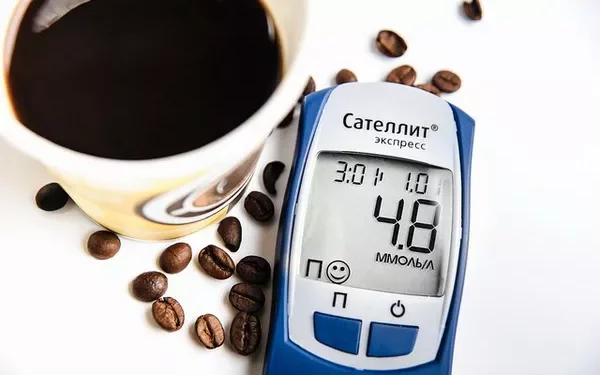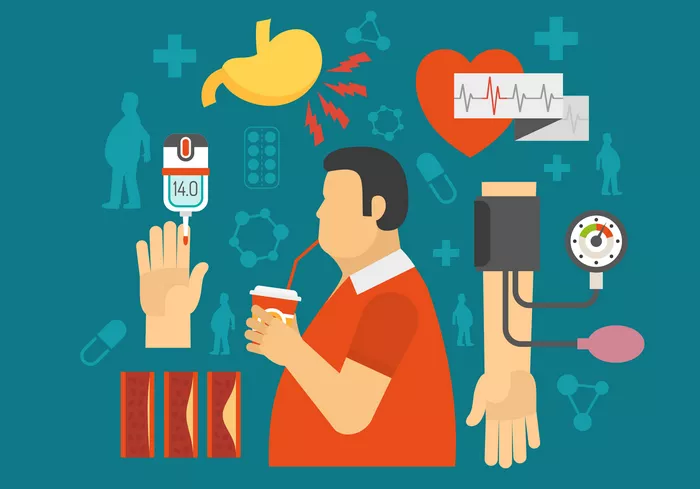Managing diabetes requires constant vigilance, especially when it comes to monitoring blood sugar levels. A reading of 300 mg/dL is a cause for concern, indicating hyperglycemia, which can lead to serious complications if not addressed promptly. This article will explore the steps to take when faced with high blood sugar levels, understanding the underlying causes, and implementing strategies for better management moving forward.
My Sugar Level is 300: What Should I Do?
Hyperglycemia is defined as elevated blood glucose levels, typically above 180 mg/dL after meals and above 130 mg/dL when fasting. Consistently high levels, such as 300 mg/dL, can indicate poor diabetes control and may lead to severe health complications, including:
Diabetic Ketoacidosis (DKA): A life-threatening condition mainly seen in Type 1 diabetes characterized by high blood sugar, ketone production, and acidosis.
Hyperglycemic Hyperosmolar State (HHS): A serious condition primarily in Type 2 diabetes where extremely high blood glucose levels lead to dehydration and increased osmolarity without significant ketone production.
Causes of High Blood Sugar Levels
Understanding the potential causes of high blood sugar is crucial for effective management. Here are some common reasons why blood glucose might spike to 300 mg/dL:
Insufficient Insulin Production:
In Type 1 diabetes, the pancreas fails to produce insulin.
In Type 2 diabetes, insulin resistance may lead to inadequate insulin production.
Poor Dietary Choices:
High carbohydrate intake, especially refined sugars and simple carbohydrates.
Skipping meals or irregular eating patterns can affect blood sugar control.
Lack of Physical Activity:
Sedentary lifestyle contributes to poor insulin sensitivity and elevated blood glucose levels.
Illness or Infection:
Illness can increase stress hormones in the body, leading to increased blood sugar levels.
Medications:
Certain medications, including steroids and some diuretics, can elevate blood sugar levels.
Stress:
Emotional or physical stress can trigger the release of hormones that increase blood sugar levels.
Dehydration:
Insufficient fluid intake can lead to concentration of glucose in the blood.
Immediate Actions to Take When Blood Sugar is 300 mg/dL
If you find yourself with a blood sugar reading of 300 mg/dL, here are the immediate steps to take:
1. Stay Calm and Assess the Situation
While a high reading can be alarming, it’s essential to remain calm and take measured steps. Stress can further elevate blood sugar levels, so focus on practical solutions.
2. Recheck Your Blood Sugar Levels
Before taking any action, recheck your blood sugar level after about 15-30 minutes to confirm the reading. Sometimes, faulty meters or incorrect testing techniques can yield inaccurate results.
3. Stay Hydrated
Drink plenty of water to help dilute the excess sugar in your bloodstream and promote urination, which can help reduce blood sugar levels. Aim for non-caloric beverages to avoid further spikes.
4. Take Insulin or Diabetes Medication as Directed
If you are on insulin therapy or oral hypoglycemic agents, follow your prescribed treatment plan. Administer your insulin dose according to your healthcare provider’s guidelines. If you are unsure of how much to take, consult your diabetes care team.
5. Monitor for Symptoms of DKA or HHS
Be vigilant for signs of Diabetic Ketoacidosis (DKA) or Hyperglycemic Hyperosmolar State (HHS). Symptoms may include:
DKA:
Nausea or vomiting
Abdominal pain
Rapid breathing or shortness of breath
Fruity-smelling breath
HHS:
Severe dehydration
Confusion or altered consciousness
Increased thirst and urination
If you experience any of these symptoms, seek emergency medical attention immediately.
Long-Term Management Strategies
While immediate actions are critical, long-term strategies are essential for effective diabetes management and preventing future hyperglycemic episodes.
Evaluate and Adjust Your Diet
Diet plays a crucial role in managing blood sugar levels. Here are some dietary tips:
- Carbohydrate Counting: Learn to count carbohydrates to better manage meal planning. Aim for consistent carb intake at each meal and snack.
- Choose Low-Glycemic Foods: Incorporate foods that have a low glycemic index (GI) to prevent rapid spikes in blood sugar. These include whole grains, legumes, non-starchy vegetables, and most fruits.
- Portion Control: Be mindful of portion sizes to avoid overeating, which can lead to elevated blood sugar levels.
- Regular Meal Timing: Eating at consistent times can help regulate blood sugar levels. Avoid skipping meals and consider smaller, more frequent meals.
Increase Physical Activity
Regular physical activity can significantly improve insulin sensitivity and help lower blood sugar levels. Aim for:
- Aerobic Exercise: Activities such as walking, swimming, or cycling for at least 150 minutes per week.
- Strength Training: Incorporate resistance training at least twice a week to improve muscle mass and glucose uptake.
Monitor Blood Sugar Regularly
Frequent monitoring of blood sugar levels is vital for effective diabetes management. Consider:
- Daily Monitoring: For those on insulin or with unstable blood sugar, daily monitoring is essential.
- Tracking Patterns: Keep a log of blood sugar readings to identify patterns and potential triggers for high readings.
Medication Management
Discuss with your healthcare provider whether your current diabetes medications are adequate. Sometimes, medication adjustments are necessary to achieve better blood sugar control.
- Insulin Adjustments: If you’re on insulin therapy, you may need to adjust dosages based on blood sugar readings and dietary intake.
- Reviewing Oral Medications: Ensure your oral diabetes medications are appropriate for your current condition.
Manage Stress Effectively
Stress can significantly impact blood sugar levels. Consider implementing stress management techniques such as:
- Mindfulness and Meditation: Practice mindfulness techniques or meditation to reduce stress.
- Deep Breathing Exercises: Engage in deep breathing exercises or yoga to promote relaxation.
- Physical Activity: Regular physical activity can also help alleviate stress.
Education and Support
Consider enrolling in diabetes education programs to enhance your knowledge of diabetes management. Support from healthcare professionals, diabetes educators, and support groups can provide valuable guidance.
- Diabetes Education Programs: Look for local programs that offer education on diabetes management.
- Support Groups: Connecting with others facing similar challenges can provide emotional support and practical tips.
When to Seek Medical Attention
It’s crucial to know when to seek professional help. If you find your blood sugar levels consistently high or if you experience severe symptoms, contact your healthcare provider or seek immediate medical attention. Specific scenarios include:
Persistent Hyperglycemia: If your blood sugar remains elevated (e.g., above 300 mg/dL) despite corrective actions for more than a few hours.
Symptoms of DKA or HHS: As mentioned earlier, if you exhibit signs of DKA or HHS, seek emergency care.
Inability to Manage Blood Sugar: If you’re struggling to control blood sugar levels and feel overwhelmed, reach out for professional support.
Creating a Diabetes Management Plan
A comprehensive diabetes management plan tailored to your individual needs is essential for long-term success. Consider including the following components:
Setting Realistic Goals
Establish achievable blood sugar targets and other health-related goals. Work with your healthcare team to define clear and attainable objectives.
Regular Follow-Up Appointments
Schedule regular check-ups with your healthcare provider to monitor progress and make necessary adjustments to your treatment plan.
Continuous Education
Stay informed about diabetes management through reputable sources, diabetes workshops, and ongoing education.
Building a Support System
Engage family members, friends, and healthcare professionals in your diabetes management journey. Having a support system can provide encouragement and accountability.
See also: Which is the Most Accurate Blood Sugar Monitor?
Conclusion
Experiencing a blood sugar level of 300 mg/dL can be concerning, but understanding the appropriate actions to take can help mitigate risks and promote better management. By following immediate steps, developing long-term strategies, and creating a comprehensive diabetes management plan, individuals can effectively navigate the challenges of diabetes and achieve better health outcomes. Remember, managing diabetes is a continuous journey that requires commitment, education, and support, but with the right approach, it is entirely possible to live a healthy and fulfilling life.


























